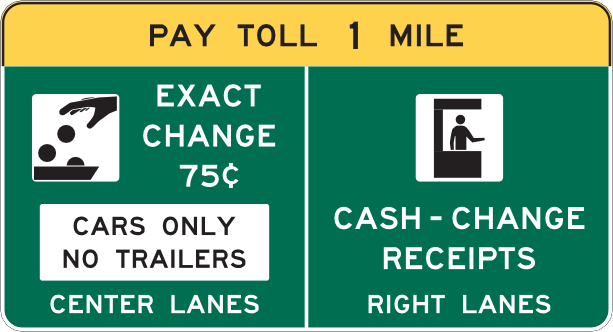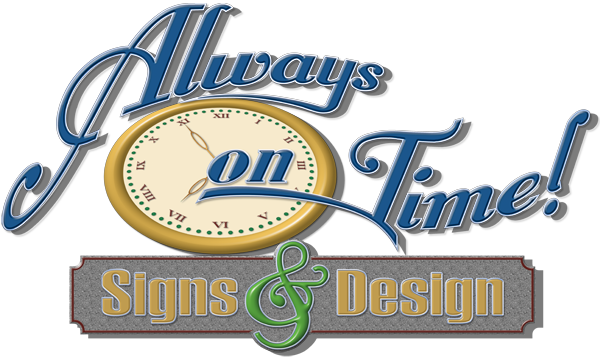
When you drive onto a toll road, the first thing you encounter after the on-ramp is usually a toll road sign. While many motorists treat these signs as routine scenery, they are in fact carefully designed communication tools that carry important financial and directional information. Every detail on a toll road sign, from the placement of text to the choice of symbols, has been engineered to help you understand what you are paying, how you can pay, and whether you may be eligible for a discount.
Understanding the role of toll road signage is crucial not only for motorists but also for municipalities, state agencies, and private toll operators who must balance efficiency, safety, and revenue generation.
The Purpose of Toll Road Signs
Toll roads are essential infrastructure, helping fund highway maintenance, construction, and expansion without overburdening taxpayers. Signs at toll points provide more than directions; they set expectations for costs, alert drivers to available payment methods, and inform them of potential discounts.
The goal is twofold:
- Enhance driver clarity by removing guesswork about payments.
- Ensure compliance by making payment requirements unambiguous.
Without clear and strategically placed signs, motorists may miss exits, misunderstand payment methods, or face fines.
What Information Toll Road Signs Provide
1. Fee Transparency
The most immediate piece of information drivers seek is cost. Signs display current rates, often broken down by vehicle type, such as passenger cars, motorcycles, and commercial trucks. Some signs also highlight variable pricing during peak hours, which is increasingly common on high-demand routes.
2. Accepted Payment Methods
In today’s environment, cash-only tolls are becoming rare. Signs now frequently advertise the availability of electronic toll collection systems such as E-ZPass, SunPass, or FasTrak. In some cases, toll road signs also indicate that cashless tolling is in place, where drivers without a transponder will receive a bill by mail.
3. Discount Programs
Many toll authorities offer discounts to encourage the use of electronic passes. Signs might remind motorists of lower rates for E-ZPass users or for frequent travelers. In certain areas, carpools or electric vehicles may also qualify for reduced tolls, and signage plays a role in communicating these incentives.
4. Lane and Traffic Guidance
Beyond payment, toll signs guide motorists into the correct lanes for their chosen payment method. Mismatched lanes can lead to last-second swerves and congestion. A well-designed sign network ensures that drivers are correctly funneled into lanes for cash, electronic, or exact change.
Design Principles Behind Toll Road Signs
The effectiveness of a toll road sign is not accidental. Industry standards and federal guidelines, such as those from the Manual on Uniform Traffic Control Devices (MUTCD), ensure consistency across jurisdictions.
Key principles include:
- Legibility at speed: Drivers often read these signs while traveling 55+ mph. Fonts, spacing, and contrast are optimized for readability.
- Symbol use: Icons for cash, credit, or transponders reduce language barriers and speed comprehension.
- Visibility in all conditions: Retroreflective materials and illumination allow signs to remain clear at night and in adverse weather.
- Placement timing: Motorists must have enough lead time to make safe lane changes, so signs are positioned strategically ahead of toll plazas or gantries.
The Rise of Cashless Tolling and Its Signage Challenges
Across the United States, cashless tolling is rapidly becoming the standard. Instead of paying in person, drivers either use electronic transponders or are billed via license plate recognition.
This shift introduces new requirements for signage:
- Advance notice: Drivers must be informed that no cash option is available before they commit to the roadway.
- Billing clarity: Signs often display terms like “Toll by Plate” or “Pay by Mail” to avoid confusion.
- Enforcement reminders: To encourage compliance, signs may warn about penalties for ignoring mailed bills.
For municipalities, upgrading to cashless systems also means investing in dynamic and digital signage that can communicate real-time pricing or alerts.
Understanding Discounts and Incentives
Toll discounts are more than financial perks; they are tools to shape driver behavior. Signs are one of the main ways these programs are advertised on the road.
Common examples include:
- Electronic pass discounts: By highlighting savings of 25-50% for transponder users, signs nudge more drivers to enroll.
- Time-of-day pricing: Digital message signs can show lower off-peak rates, encouraging motorists to adjust travel times.
- Frequent user passes: Some regions promote weekly or monthly pass savings on signs at entry points.
By communicating these options clearly, toll authorities increase participation in cost-saving programs while improving traffic flow.
Technology’s Role in Modern Toll Road Signs
Signage is no longer static. Many toll authorities are incorporating advanced technology to provide real-time, adaptable information.
1. Dynamic Message Signs (DMS)
These electronic boards can update instantly to reflect changing rates, lane closures, or detours. For toll facilities with variable pricing, DMS is essential for transparency.
2. Queue Detection and Warning Systems
By integrating with traffic sensors, signs can alert motorists to congestion ahead, allowing for safer merges and reduced rear-end collisions.
3. Integration with Smart Work Zones
In areas with construction near toll plazas, smart signage helps maintain safety by coordinating lane closures, alternate routes, and adjusted toll fees.
4. Mobile Integration
Some toll authorities now sync roadside signs with mobile apps or GPS navigation tools, reinforcing messages about payment options and fees.
How Toll Signs Affect Driver Behavior
Signs are not just informational; they directly influence choices. Studies show that clear toll signage:
- Reduces last-minute lane changes and collisions.
- Improves compliance with payment systems.
- Increases enrollment in electronic toll programs.
- Enhances trust in toll authorities by presenting transparent, predictable costs.
Poor or unclear signage, on the other hand, often leads to traffic backups, missed tolls, and frustration among drivers.
Case Study: New England’s Toll Systems
New England provides a strong example of how toll road signage has evolved. States like Massachusetts and New Hampshire have transitioned to all-electronic tolling, requiring new sign strategies. Clear advance signage now informs drivers that cash is not accepted, while large digital displays communicate current toll rates.
For commercial traffic, signage must go even further, outlining truck classifications and rates to avoid disputes or enforcement issues. Given the region’s dense population and high travel volume, reliable signage is critical to maintaining both traffic flow and revenue collection.
Safety Implications of Toll Road Signs
Safety is an often-overlooked benefit of effective toll signage. By guiding motorists smoothly into the correct lanes and providing advance notice of toll systems, signs reduce bottlenecks and sudden maneuvers.
For construction zones near toll facilities, temporary signs and smart traffic control devices play a vital role in protecting workers and drivers alike. Rental options for portable message boards, arrow boards, and cameras are increasingly used to ensure safety during roadwork or system upgrades.
The Business Side: What This Means for Municipalities and Agencies
For transportation authorities, toll road signage is not simply a regulatory requirement. It is an investment in safety, efficiency, and customer satisfaction. Choosing the right signage partner ensures:
- Compliance with MUTCD standards.
- Durability for long-term installations.
- Flexibility with rentals and temporary needs.
- Integration with smart technologies.
Agencies that overlook signage risk reduced toll compliance, higher accident rates, and public dissatisfaction.
Partnering with a Trusted Signage Provider
Worksafe Traffic Control Industries has over 25 years of experience helping municipalities and highway authorities across New England design, implement, and maintain effective signage and traffic control solutions. Whether you are deploying a new toll system, upgrading to cashless tolling, or managing construction zones near toll facilities, Worksafe offers both permanent and rental signage tailored to your needs.
Our fleet includes message signs, arrow boards, traffic signals, trailer-mounted video cameras, speed signs, and advanced microwave technologies, all backed by 24/7 maintenance and repair services. From initial design to full deployment, we ensure your toll road signage keeps traffic moving safely and your revenue flowing reliably.
Contact Us Today
Toll road signs may appear simple, but they are powerful tools that influence driver decisions, maintain safety, and ensure efficient revenue collection. As toll systems grow more complex, the need for clear, adaptive, and compliant signage becomes more pressing. Whether your community is upgrading to cashless tolling, implementing dynamic pricing, or seeking to improve safety in toll-adjacent construction zones, the right signage partner makes all the difference.
For municipalities and agencies throughout New England, Worksafe Traffic Control Industries is that partner. With decades of expertise, a full suite of smart work zone technologies, and flexible rental or purchase options, Worksafe delivers comprehensive solutions from planning through ongoing support.
If you are ready to improve the clarity, safety, and efficiency of your toll systems, contact us today.

